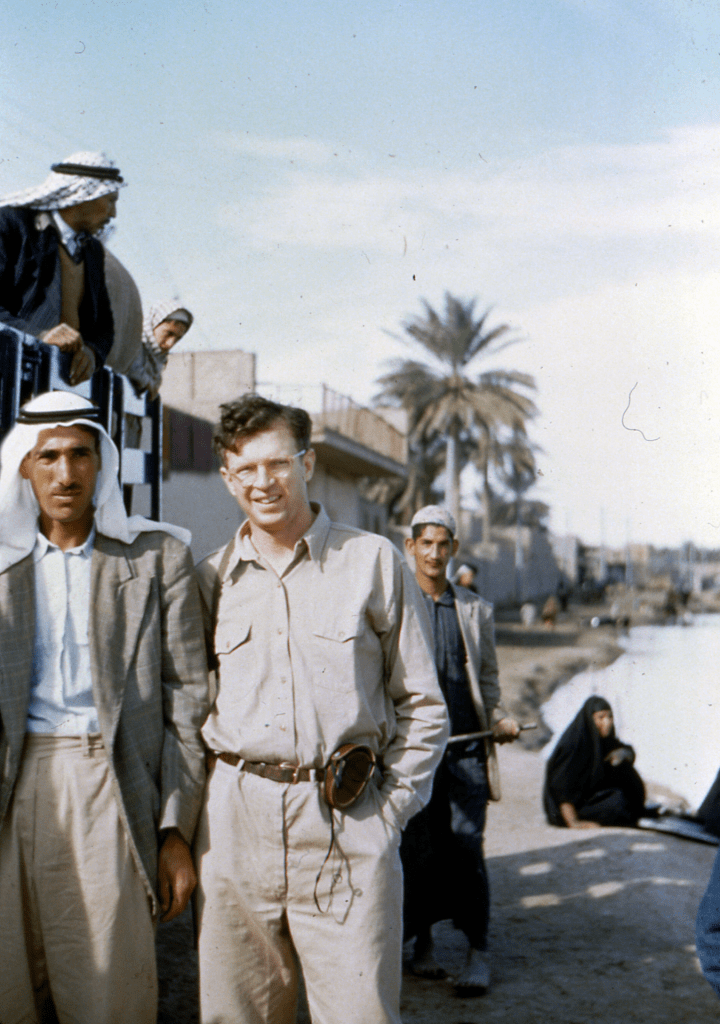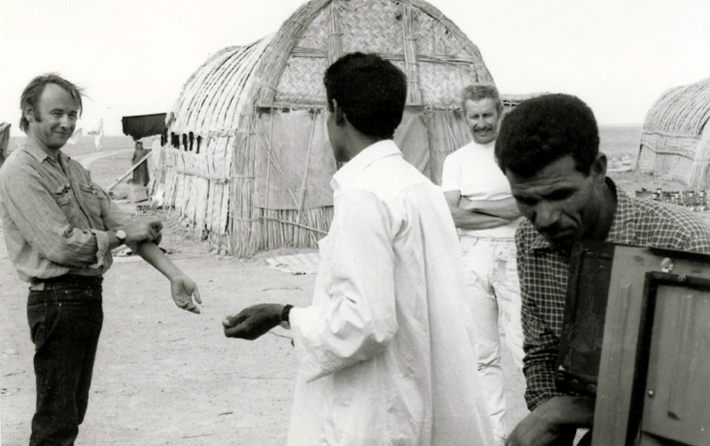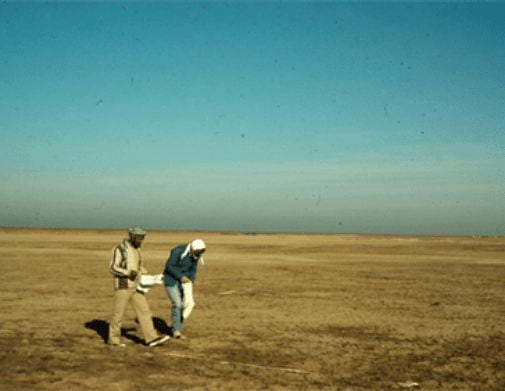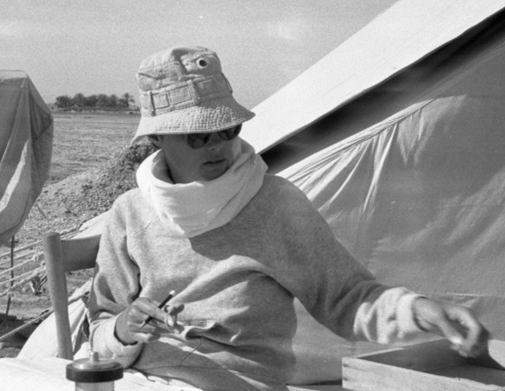NYU/Metropolitan Museum of Art Excavations 1968 – 1990
1968-1978 Seasons
Lagash was first scientifically investigated during five seasons beginning in 1968 and ending in 1978 by a joint project of the Metropolitan Museum of Art and the Institute of Fine Arts at NYU under the leadership of the Director and Permit Holder Dr. Vaughn Crawford (MMA) and Field Director Prof. Donald P. Hansen (NYU) and Deputy Director Prof. Edward Ochsenschlager (CUNY Queens). This five year campaign was brought to an end by the Iran-Iraq war.
1968-1978: The Team
 Vaughn E. Crawford joined the department of Ancient Near Eastern Art at the Metropolitan Museum of Art in 1957, serving as curator in charge from 1973-1981. He served as Project Director for the Excavations at al Hiba/Lagash from 1969 to 1978. He held his PhD in Sumerian from the University of Chicago. He made great friends in the village of Al-Hiba, and to this day, they remember his kind and generous character.
Vaughn E. Crawford joined the department of Ancient Near Eastern Art at the Metropolitan Museum of Art in 1957, serving as curator in charge from 1973-1981. He served as Project Director for the Excavations at al Hiba/Lagash from 1969 to 1978. He held his PhD in Sumerian from the University of Chicago. He made great friends in the village of Al-Hiba, and to this day, they remember his kind and generous character.
 Dr. Donald P. Hansen (1931-2007) was the Craig Hugh Smyth Professor of Near Eastern art and archaeology at the Institute of Fine Arts and New York University. In 1968 he joined with the Metropolitan Museum of Art to launch excavations at the site of Tell al-Hiba, ancient Lagash. Seen here at the edge of the marsh in the 1968 season.
Dr. Donald P. Hansen (1931-2007) was the Craig Hugh Smyth Professor of Near Eastern art and archaeology at the Institute of Fine Arts and New York University. In 1968 he joined with the Metropolitan Museum of Art to launch excavations at the site of Tell al-Hiba, ancient Lagash. Seen here at the edge of the marsh in the 1968 season.
 Donald Hansen and Edward Ochsenschlager (in the white tee shirt) talking with villagers working on the expedition. Behind them is one of the three large mudhif’s that served as living and working quarters for seasons between 1968 and 1978.
Donald Hansen and Edward Ochsenschlager (in the white tee shirt) talking with villagers working on the expedition. Behind them is one of the three large mudhif’s that served as living and working quarters for seasons between 1968 and 1978.
 Edward Ochsenschlager, Professor emeritus of Queens College, New York City served as the ceramicist for the expedition developing a typology and recording more than 80,000 sherds in secure archaeological context. Ochsenschlager also undertook ethnographic study during his time at Al-Hiba, writing Iraq’s Marsh Arabs in the Garden of Eden (University of Pennsylvania Press 2005).
Edward Ochsenschlager, Professor emeritus of Queens College, New York City served as the ceramicist for the expedition developing a typology and recording more than 80,000 sherds in secure archaeological context. Ochsenschlager also undertook ethnographic study during his time at Al-Hiba, writing Iraq’s Marsh Arabs in the Garden of Eden (University of Pennsylvania Press 2005).
 Iraq’s Marsh Arabs in the Garden of Eden by Prof. Edward Ochsenschlager (University of Pennsylvania Press 2005).
Iraq’s Marsh Arabs in the Garden of Eden by Prof. Edward Ochsenschlager (University of Pennsylvania Press 2005).
1984 Season
In 1984, Prof. Elizabeth Carter (UCLA) lead a small team to survey the site determining that the period of greatest occupation was the Early Dynastic III period (2500-2350 BCE).
1990 Season
In 1990, the University of Pennsylvania and Prof. Holly Pittman joined Project Director Donald Hansen to return to the site with the intention of initiating a new campaign focused on the Early Dynastic I period. The First Gulf War prematurely ended that plan after a single successful season.

